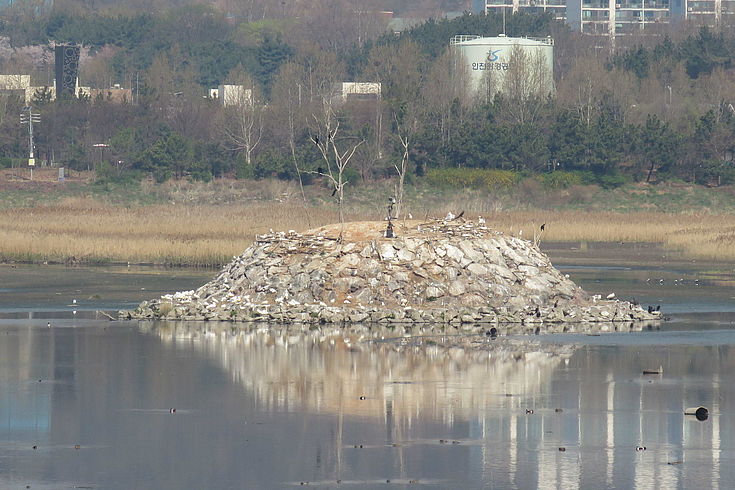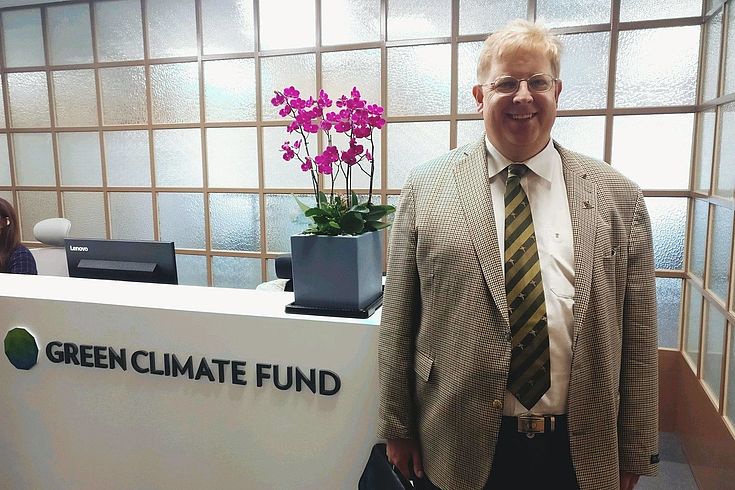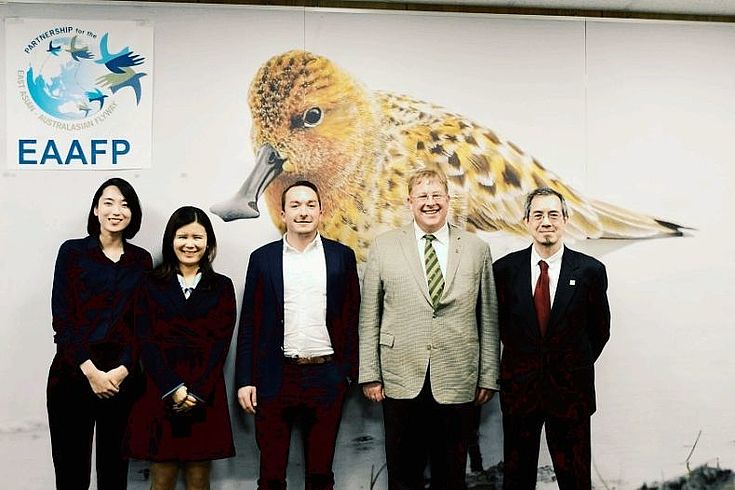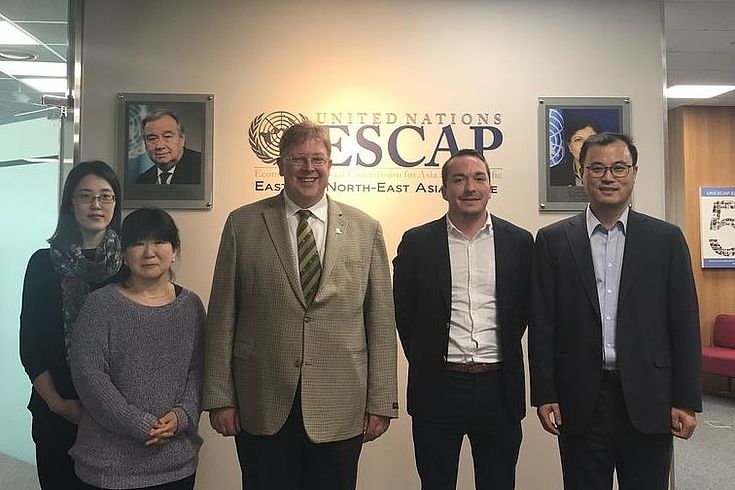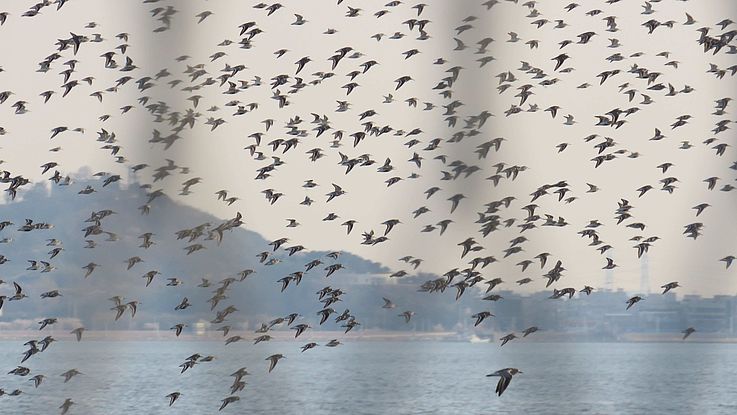Meetings in Songdo
Environment Cooperation in Northeast Asia
Namdong Reservoir surrounded by high-buildings and industry complexes
Songdo International Business District is a smart city built from scratch on 600 hectares of reclaimed land along the waterfront of Incheon City. Despite the massive development of the former wetland, some biodiversity is left which results in a city of great contrasts. Between high-rise buildings and crowded streets, the Namdong Reservoir is located, a breeding site for the iconic, but globally endangered Black-faced Spoonbill, of which only about 3000 individuals remain.
The District is also home to many international organizations, including the United Nations Green Climate Fund (GCF). The GCF is sometimes described as "the World Bank for green growth", offering financial aid to developing countries combating climate change. The Hanns Seidel Foundation Korea visited Songdo for meetings with the GCF, as well as long-standing partners, such as the East - Asian Australasian Flyway Partnership (EAAFP) and the United Nations Economic and Social Commission for Asia and the Pacific (UNESCAP).
Dr. Seliger, resident representative of HSF Korea, at the Green Climate Fund
During the meeting with the GCF, the current projects of Hanns Seidel Foundation in Korea and around the world were introduced, and the potential for a collaboration with the fund was discussed. HSF is active in around 50 countries around the world, and some of its projects are related to environmental conservation, Sustainable Development Goals and Climate Change Mitigation.
HSF is partner of the EAAFP
The meeting with the EAAFP took place only days after the partnership welcomed its 36th Partner, the Democratic People´s Republic of Korea (DPRK). The Hanns Seidel Foundation is the 35th Partner since March 2016. The EAAFP was launched in 2006 with the goal to recognize and conserve migratory waterbirds and their habitats in the East Asian - Australasian Flyway for the benefit of people and biodiversity. HSF and EAAFP work closely together to promote environmental cooperation in East Asia and on the Korean Peninsula. The visit was also the first meeting with the new Chief of the EAAFP, Dr Lew Young, who is well known to HSF Korea through his former capacity as the Regional Advisor for Asia at the Ramsar Secretariat.
Discussion about environmental cooperation with the UNESCAP
The last meeting led the delegation of HSF Korea, Dr Bernhard Seliger, Resident Representative, and Felix Glenk, Project Manager for DPRK, to UNESCAP. HSF Korea and UNESCAP have a close relationship for several years and occasionally worked together, e.g. at an international survey in Rason in 2014 and during a workshop on transboundary nature conservation in Beijing in December 2016. The current developments on the Korean Peninsula and the prospects for environmental cooperation in Northeast Asia were the focus during the discussion with Dr Nam Sangmin, the Deputy Director of UNESCAP.

